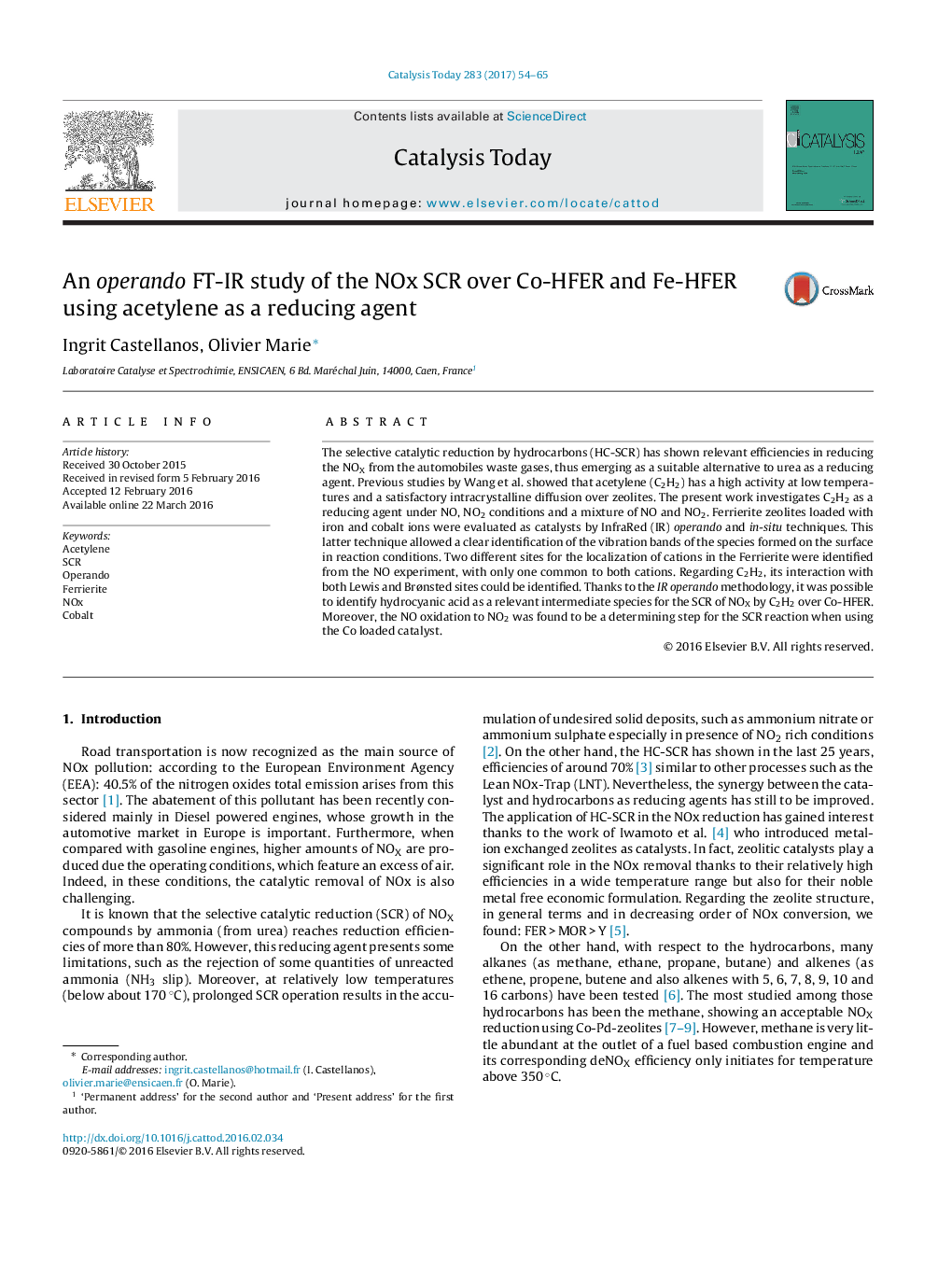| Article ID | Journal | Published Year | Pages | File Type |
|---|---|---|---|---|
| 6455258 | Catalysis Today | 2017 | 12 Pages |
â¢The positions of TMI cations in the FERRIERITE were investigated from NO adsorption.â¢The distinct C2H2 interaction modes with Lewis or Brønsted acid sites were identified by IR in situ technique.â¢Hydrocyanic acid was proposed as an intermediate species of the NOX SCR by C2H2.â¢The Co-HFER catalyst presents the highest efficiency in NO2 SCR by C2H2.
The selective catalytic reduction by hydrocarbons (HC-SCR) has shown relevant efficiencies in reducing the NOX from the automobiles waste gases, thus emerging as a suitable alternative to urea as a reducing agent. Previous studies by Wang et al. showed that acetylene (C2H2) has a high activity at low temperatures and a satisfactory intracrystalline diffusion over zeolites. The present work investigates C2H2 as a reducing agent under NO, NO2 conditions and a mixture of NO and NO2. Ferrierite zeolites loaded with iron and cobalt ions were evaluated as catalysts by InfraRed (IR) operando and in-situ techniques. This latter technique allowed a clear identification of the vibration bands of the species formed on the surface in reaction conditions. Two different sites for the localization of cations in the Ferrierite were identified from the NO experiment, with only one common to both cations. Regarding C2H2, its interaction with both Lewis and Brønsted sites could be identified. Thanks to the IR operando methodology, it was possible to identify hydrocyanic acid as a relevant intermediate species for the SCR of NOX by C2H2 over Co-HFER. Moreover, the NO oxidation to NO2 was found to be a determining step for the SCR reaction when using the Co loaded catalyst.
Graphical abstractDownload high-res image (155KB)Download full-size image
